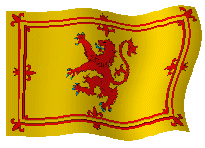 |

   |
 |
|
The
Timber Corps Revisited
Scotland August 17, 2003
By
Rosalind Elder
|
|
CLICK HERE TO SEE NEWS ABOUT THE NEW WOMEN'S TIMBER CORPS
STATUE |
|
|
|
A nostalgic trip, returning to the North
of Scotland
with the BBC’s Rhona Brudenell,
Producer, and Edith Stark, Presenter.
|
|
I
was
invited back to Scotland by BBC4 to participate in a program about the Women’s
Timber Corps. My eldest daughter volunteered to accompany me on this lengthy
journey of 7,036 km from Vancouver, Canada to Glasgow, Scotland. On our arrival
at the Glasgow Airport, a staff member from the BBC met us and drove us to the
Moat House Hotel on the banks of the River Clyde. We observed the many changes
that Glasgow had undergone since our last visit, now it is a much more
attractive city than it was when I left it in 1946. In fact swans were gliding
on the river, public walkways lined the banks and on the opposite side of the
bridge was a Science Centre.
After a relaxing evening, we set out early the next morning on our journey by
car to the North with Rhona the producer, and Edie the presenter. Our first stop
was in Fyffe where we met Bonnie Macadam another ex-member of the Timber Corps
who had been an instructor at Shandford Lodge in Brechin. Unfortunately, Bonnie
was unable to join us on the journey owing to ill health. We reminisced about
our years in Corps and sang a few of the songs the lumberjills did during those
bumpy lorry rides on the way to the woods. Enroute once more we made our way
North to Brechin, Angus, the weather was ideal, sunny and dry, which boded well
for our journey.
On to Shandford Lodge, Brechin, Angus
(
Click to see picture ) to meet the present owner of the Lodge
John Mather. He and his delightful family own two working farms they were busily
engaged in harvesting oats and barley for the local distilleries. He kindly took
time out to show us around the Lodge and the stables. I was surprised to see
that the small one in which I stabled my first horse was still being used, and
with the addition of several new ones.
It was sad
to see the grounds where our damp wooden huts had stood, just beyond what is now
the rose garden, some 200 ft from the actual lodge. How cold, wet and
uncomfortable we were most of the time that November of 1942, and I believe the
ministry could have better provided for us. Scott Mother was very helpful
indeed, he is quite a photographer, and had corresponded with me in Canada by
email sending photos of the magnificent views of the surrounding countryside.
His father drove up the hill with us to the site above the lodge where the
lumberjills trained, the trees were thinned out and it was just as windy as I
remembered it to be almost 60 years ago. I could picture myself, back then,
young and enthusiastic, hauling trees with a horse from the top of that hill to
the crosscutters down below. The view hadn’t changed much and is still as
breathtakingly beautiful as it was back then.
Later that
day we traveled north to Boat-of-Garten where we stayed overnight at the Boat
Hotel. We strolled around the village, and had a look at the railway station
where some of the program “Monarch of the Glen” was shot. Boat-of-Garten was a
popular place during the war years with Canadians and other service personnel.
The W.T.C. members attended many dances held in the village hall and knew a
number of the servicemen from other countries who trained in the area, as well
as those stationed there.
Early next
morning we headed to Carrbridge, Inverness shire on a highway that my Canadian
daughter thought was a secondary road. The roundabouts were a nightmare with
heavy vehicles cutting in; we thought we had had it several times, as they came
so close. I closed my eyes and hoped for the best. The hills were covered in
purple heather, which was quite lovely, and their beauty impressed us,
especially as my daughter had not been that far north in Scotland before. Seeing
the Grampians again, I felt somehow that I had come home; everything was as I
remembered it during those war years.
Our next stop was
at the home of lain Maclnnes the owner of Carrbridge Trekking Centre. lain is
the son of Jimmy Maclnnes who supplied the horses to the lumber camps back in
the forties. In fact, lain who was about 14 years old at that time had also
worked in the woods. He was outside waiting to greet us and had a splendid young
horse awaiting our arrival. We talked about the days of the Timber Corps and of
the people we once knew, lain accompanied us to the field where Auchterblair
Camp had stood and to the forest where I was stationed back in 1943. Of course,
the wooden huts had long since been demolished; it was so quiet and peaceful in
the forest. The tall scotch pines were swaying in the breeze and the pine
needles were soft underfoot, it was hushed and silent now. |
|

Auchterblair Woods 2003 |
|
The trees had grown again after all those years, and
I could recall the voices of the girls calling out
“timber” and the sound of the axes and saws. I
imagined that I could hear the laughter of the
lumberjills as they went about their work, it was
deeply moving, and I longed to see them all just
once more. When we returned with lain back to
Carrbridge Trekking, he had set up a display of the
tools we used in the woods. The heavy 6 lb axes,
crosscut saws, and cant hooks we rolled the logs
with are all outdated now.
On leaving Carrbridge, we stopped at the local village hall, where I
first met my husband Louis at a Saturday evening dance. The hall was
always crowded as we danced to the music of Coutt’s Jubilee Band.
Some wild evenings were spent there, especially when the
Newfoundlanders were present.
I often attended the dances given by the Canadian Forestry Corps who
had their own band and held their dances in their log camps.
However, after they were repatriated in 1945, we had only the local
dances.
Our camp was closed down in 1945 and we were transferred to
Inverchoalain Lodge, near Dunoon in Argylleshire. A very comfortable
billet after many years of living in huts, the war was over and we
were awaiting our release from the service. During this time several
of the members married their returning sweethearts and a number of
us married Canadians and other overseas service men who were due to
return to their own countries. I left for Canada in March of 1946 to
begin my new life.
The next part of our trip took us to Aviemore where we were
introduced to a Newfoundlander who had remained behind after the
war, and was married to a local girl. We talked of the many people
we knew and of those who had gone overseas after the war. The trip
was all too short and did not cover half of the places I had been
stationed. Advie, Morayshire, Grantown on Spey, and Inverchoalin
Lodge. by Dunoon, Argylleshire.
Nevertheless, the visit sponsored by BBC4 was at least a beginning
and perhaps will help to create some interest in that the Women’s
Timber Corps existed and that we were a valuable part of the war
effort. Sadly, we have gone unrecognized for the past 60 years and
will probably remain the “Forgotten Army”. However, we do have fond
memories of friendships formed during those troubled years, and the
knowledge that we rose to the occasion and helped win a war by the
dint of our labour. Therefore, Lumberjills wherever you are, be
proud and enjoy the remainder of your days, rejoice in the many
happy memories we shared and a job well done. |
| |
|
 |
 |
 |
|
Rosalind Elder's
Return visit with the BBC in 2003
|
|
|
|
| | |



In Scotland,
"You can still hear the wind whispering in the trees" |
|
|